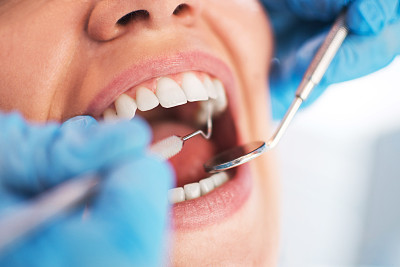Overcoming Dental Fear and Anxiety When It Comes to Extracting a Tooth A Patients Guide to Comfort
Summary: Dental fear and anxiety are common among patients facing tooth extraction, which can hinder their decision to seek necessary dental care. This comprehensive guide explores effective strategies for overcoming these fears. By understanding the causes of dental anxiety, employing relaxation techniques, communicating openly with dental professionals, and considering sedation options, patients can ensure a more comfortable and less stressful experience during tooth extraction. This article aims to empower patients with knowledge and tools to manage their anxiety, transforming their approach to dental appointments and enhancing their overall experience.
1. Understanding the Causes of Dental Anxiety

Dental anxiety can stem from multiple factors, including past negative experiences, fear of pain, and the sounds and sights associated with dental procedures. Many patients may have endured discomfort during previous dental visits, which compounds their fear of future procedures. Identifying these triggers is the first step towards overcoming anxiety.
Other factors contributing to dental fear include a lack of control. Upon entering the dental office, patients may feel overwhelmed by the unfamiliar environment and procedures. They often feel powerless, which can escalate anxiety. Understanding that these feelings are common can help patients recognize they are not alone.
Moreover, fear of the unknown can intensify anxiety. Patients might worry about the potential outcome of the extraction or what the procedure entails, contributing to heightened stress levels. Being informed about the extraction process can alleviate some of this anxiety by providing clarity on what to expect.
2. Techniques to Promote Relaxation Before the Appointment
Implementing relaxation techniques is essential in combating dental fear. Deep breathing exercises, for example, can calm the mind and body before entering the dental chair. Patients can practice inhaling slowly through the nose, holding the breath for a moment, and then exhaling gently through the mouth to ease tension.
Visualization techniques can also be beneficial. Patients can imagine a peaceful place or a happy memory before the appointment, distracting themselves from anxious thoughts and creating a more serene mental environment. This method taps into the power of the mind to influence the body’s response to stress.
Listening to music or audiobooks can also serve as a distraction during the procedure. Many dental offices allow patients to listen to headphones, which helps drown out the sounds of dental tools and create a more relaxing atmosphere. Choosing something enjoyable can significantly enhance a patient’s comfort.
3. Open Communication with Dental Professionals
Open communication with dental professionals is critical for alleviating fears. Patients should not hesitate to express their worries or previous negative experiences. A good dentist will listen and work with the patient to find solutions that enhance comfort and alleviate concerns.
Moreover, asking questions about the procedure, recovery times, or pain management options can provide much-needed reassurance. Understanding the extraction process helps demystify it, making it feel less daunting. Patients can ask their dentist what they should expect during the procedure, helping to prepare mentally for the experience.
Additionally, establishing a signal during the procedure, such as raising a hand, can give patients a sense of control. This allows them to communicate discomfort or anxiety to their dentist without having to speak, creating a more comfortable environment during the extraction.
4. Exploring Sedation Options for Increased Comfort
For those with significant dental anxiety, sedation dentistry may be an ideal option. Dentists often offer various sedation methods, ranging from nitrous oxide (laughing gas) to more advanced sedation techniques such as oral sedatives or IV sedation. Each option provides varying levels of anxiety relief, allowing for a tailored approach based on the patients needs.
Nitrous oxide is a popular choice due to its mild sedating effects and rapid recovery time. Patients are awake and responsive yet feel relaxed throughout the procedure. This can significantly enhance comfort while allowing dentists to perform necessary work efficiently.
For patients with extreme anxiety or those undergoing complex procedures, deeper sedation options like IV sedation might be recommended. This allows patients to be heavily sedated and less aware of the dental activities underway, effectively reducing fear and discomfort. Consulting with a dentist about the appropriate sedation method can significantly influence a patients comfort level during the extraction.
Summary:
Overcoming dental fear and anxiety is achievable through understanding the causes of discomfort, employing relaxation techniques, fostering open communication with dental professionals, and exploring sedation options. By arming themselves with knowledge and tools, patients can transform their experiences with dental extractions from anxiety-filled events into manageable, comfortable procedures.
This article is compiled by Vickong Dental and the content is for reference only.



